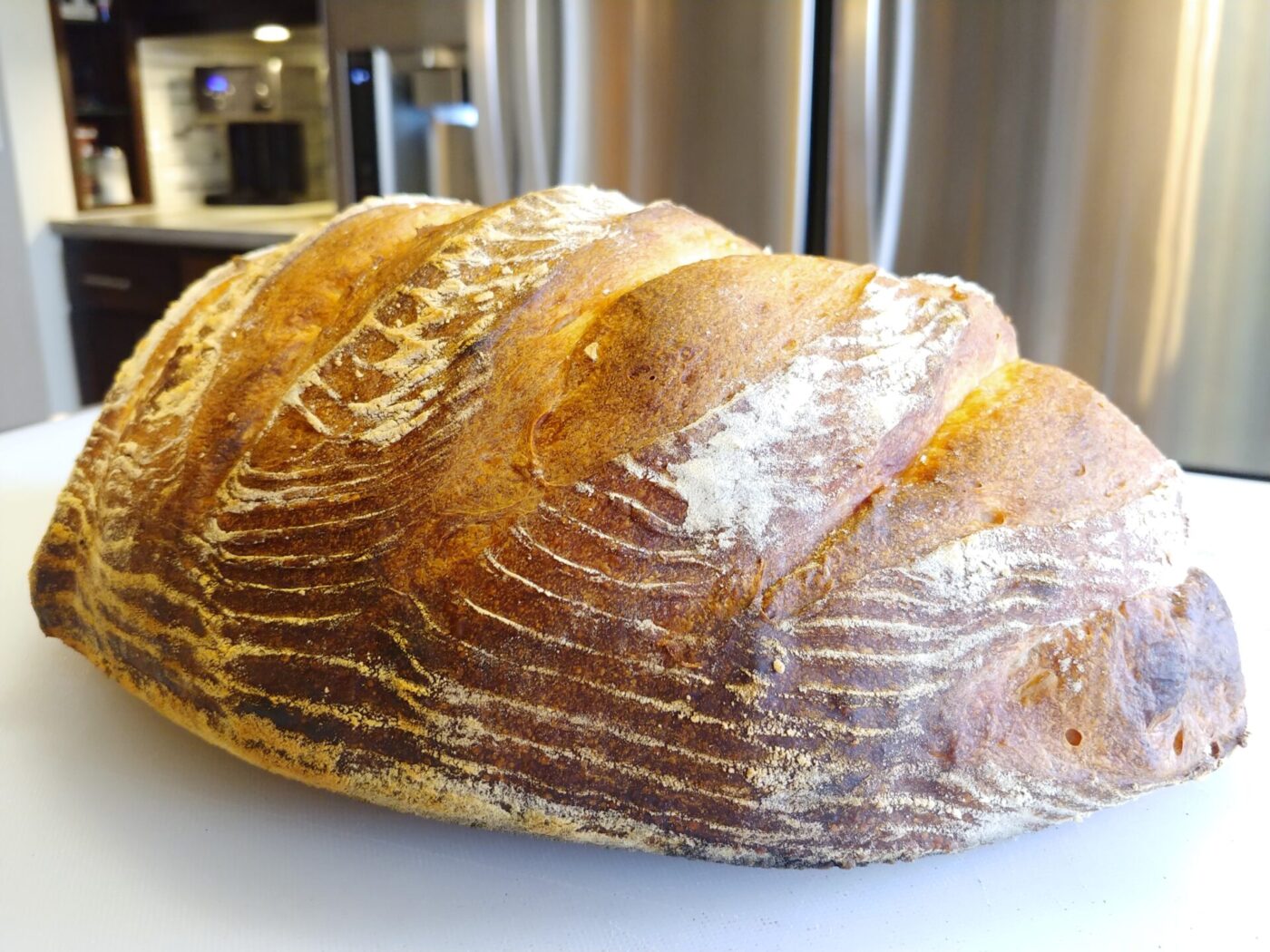Read More: Nutritional Information of Bread Flour
The Protein Powerhouse
The defining nutritional characteristic of bread flour is its elevated protein content. While all-purpose flour typically contains 10-12% protein, bread flour ranges from 12% to 14%, and can sometimes be even higher. This protein is composed of two main types: glutenin and gliadin. When hydrated and kneaded, these proteins link together to form strands of gluten. From a functional standpoint, this gluten network is what gives bread its structure and chew. From a nutritional standpoint, this means that bread made with bread flour contributes a significant amount of protein to one’s diet. A single slice of homemade bread made with bread flour can contain 4-5 grams of protein, making it a valuable component of a balanced meal, helping with satiety and muscle maintenance. This higher protein content is the primary reason bakers choose bread flour for their yeast-leavened goods.
Carbohydrates for Energy
Like all wheat flours, bread flour is predominantly composed of carbohydrates, specifically starch. The endosperm of the wheat kernel, from which white bread flour is milled, is the plant’s energy storage unit. In our diet, these complex carbohydrates serve as a primary source of fuel for our bodies. A typical quarter-cup serving of bread flour contains around 22-23 grams of carbohydrates. When we eat bread, our digestive system breaks these starches down into glucose, which is used to power everything from brain function to physical activity. Because white bread flour has had the fibrous bran removed, these carbohydrates are digested relatively quickly, providing a ready source of energy.
The Importance of Enrichment
Modern white bread flour, like its all-purpose counterpart, undergoes a process called enrichment. During the milling process that removes the bran and germ to create a fine, white flour, many of the wheat’s natural vitamins and minerals are stripped away. To compensate for this loss and to prevent public health issues related to nutrient deficiencies, governments mandate that these nutrients be added back into the flour. Enriched bread flour is a significant source of:
- B Vitamins: Thiamin (B1), Niacin (B3), Riboflavin (B2), and Folic Acid (B9) are added back. These vitamins are crucial for energy metabolism, nerve function, and, in the case of folic acid, preventing birth defects.
- Iron: This essential mineral, vital for carrying oxygen in the blood, is also added back in significant amounts. For many people, fortified breads and cereals are a major source of their daily iron intake.
This enrichment makes bread flour not just a functional ingredient, but also a vehicle for delivering essential public health nutrients.
Fiber and Fat Content
The nutritional profile of white bread flour is also notable for what it contains in very small amounts: fiber and fat. The vast majority of the dietary fiber and healthy fats in a wheat kernel are located in the bran and germ, respectively. Because both are removed during the milling of white bread flour, the final product is very low in both. A serving of bread flour typically contains only about one gram of fiber and less than one gram of fat. While this results in a longer shelf life and a lighter, airier texture in bread, it means that white bread does not offer the digestive health benefits or the feeling of fullness associated with high-fiber, whole-grain breads. For this reason, many health-conscious bakers choose to blend bread flour with whole wheat flour to get the best of both worlds: the structural benefits of high protein and the nutritional benefits of whole grains.
A Note on Gluten
It is impossible to discuss the nutritional aspects of bread flour without mentioning gluten. For the vast majority of the population, the strong gluten network formed by bread flour is precisely what makes it so desirable, leading to a delicious and satisfying texture. However, for individuals with celiac disease, a serious autoimmune disorder, the ingestion of gluten triggers an immune response that damages the small intestine. For those with non-celiac gluten sensitivity, gluten can cause digestive discomfort and other symptoms. For these individuals, bread flour, with its exceptionally high gluten-forming potential, must be strictly avoided. The very protein that makes bread flour a hero ingredient for most bakers makes it a nutritional villain for a small but significant portion of the population.



Comments